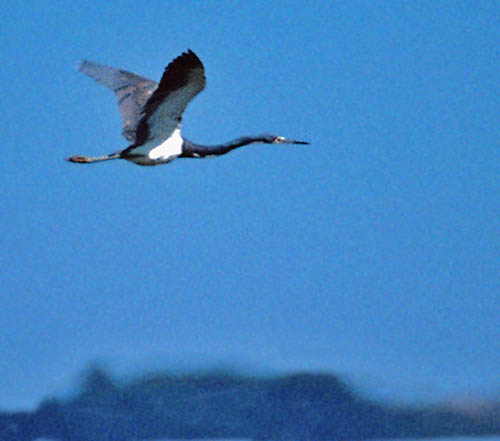| |
#1
Swallow-tailed Gull Creagrus furcatus
This
spectacular endemic gull of the Galapagos is a pelagic night-feeder,
focused on squid, and mostly remains in the cold offshore currents
between the Galapagos and Peru. It was not anticipated to occur in
North America. But observers overlooked the power of El Niño,
the occasional global phenomenon when warm waters of the western
Pacific wash back over cold eastern upwellings, producing extraordinary
high sea surface temperatures across the Pacific. The 1983-84 El
Niño, the strongest on record, dispersed the entire Galapagos
population far at sea, south and north, as the ecosystem collapsed.
On 7 June 1985, Alan Baldridge was shocked to
see an adult perched with nesting Western Gulls at Hopkins Marine
Station, Pacific Grove. At night the gull left, presumably to feed on
squid in the Bay, but returned on 8 June to the delight of local
birders. It did not return 9 June 1985 to Hopkins, but Ed Harper found
it mid-day at the Moss Landing gull roost where it stayed a short time.
Eleven years later, prolonged warm waters
brought one near the Farallones, and more recently (2017) adults were
found in Washington state (late July-early Aug Puget Sound) and Bodega
Bay, Sonoma Co. (5 Oct 2017). This gull epitomizes the best in
vagrants: long distance dispersal, striking plumage, unusual habits,
and pure serendipity to see.
photo 7 June 1985 © Peter LaTourrette
|
|
|
#2
Little Curlew Numenius minutus
The
first Western Hemisphere record of Little Curlew was found 16 Sep 1984
by Paul Lehman in the Santa Maria river bottoms. That bird was in
juvenal plumage; see Lehman & Dunn (1985) for more on the record
and Schram (1985) for an account of the huge event that ensued as
birders from across America chased it during a month-long stay in Santa
Barbara Co.
Four years later a Little
Curlew turned up just a couple miles from the initial spot, and five
years after that an adult was on an adjacent beach. Finally, in Sep
1994, an adult was at Carmel River State Beach. Given this species'
small world population and its extreme rarity in North America, we
believe the same bird was involved in all of California's records. It
would have been 10 years old when it lingered on Carmel River SB for 3
weeks [6-28 Sep 1994], where it fed on the sandy shores by the rolling
surf. It again attracted many observers and highlighted local TV news
broadcasts.
There has since been a spring record in
Washington state (2001; it is possible that this same bird was
involved; see Howell et al. 2014), and 2 late spring records from St.
Lawrence I., Alaska. There remains only this one for California.
photo 9 Sep 1994 © Don Roberson
|
# 3
Terek Sandpiper Xenus cinereus
While
Little Curlew [#2, above] may be the rarest Old World shorebird to
reach North America, Terek Sandpiper may be the most endearing wader
for its short legs, its long upturned bill, and its status as a major
rarity in the New World.
This first
California record was an adult found 28 Aug 1988 by visiting birders
from Maryland (details in Wilson & Harriman 1989). It occurred in a
year that had an amazing run of Siberian vagrants (including Gray
Wagtail and Long-toed Stint, see #4 and #13), which turned up within a
12 mile radius from Carmel. The Terek foraged on sandy Carmel River
beach and amongst rocky tidepools, staying almost a month [28 Aug–23
Sep 1988]. It remains the only record of Terek Sandpiper for
California. There was a prior record of an adult at Vancouver I.,
British Columbia (Jul-Aug 1987) but otherwise it is an extraordinary
vagrant south of Alaska.
photo 28 Aug 1988 © Peter LaTourrette
|
|
|
# 4
Gray Wagtail Motacilla cinerea
The
fall of 1988 that began with a Terek Sandpiper (#3) and a Long-toed
Stint (#13) brought the only Gray Wagtail to California. It was found
on Sunday afternoon of 9 Oct 1988 by David Sibley & Jeff Kingery at
the Salinas River mouth. By the time word got out it was dark. Many
local birders were leaving at 10 p.m. that night on a long-scheduled
24-hour boat trip from Monterey to the Davidson Seamount, so there
appeared no way it could be chased the next day. But the weather was
rough off Pt. Pinos and the boat trip was canceled before getting any
farther; all returned to Monterey harbor by dawn. This allowed many of
those from the boat trip to chase — and see — this major rarity on its
last day of occurrence. It remains the only California record of this
Siberian vagrant. There are 3 more recent records, two in British
Columbia (Nov 1991, Oct 2004) and one offshore Washington state (Sep
2016).
The wagtail foraged along the
shore and rip-rap at the river mouth estuary, sometimes flying close
enough for photos. It took a lot of luck to tick this major rarity,
including the luck of living nearby and the luck of bad weather
offshore!
photo 10 Oct 1988 © Stephen F. Bailey
|
# 5
Great Frigatebird Fregata minor
Frigatebirds
sail over tropical oceans. Any frigate is a rarity as far north as
Monterey Bay. There are a handful of summer records of Magnificent
Frigatebird F. magnificens here, most of them dating to the last century.
There are just three California records of
Great Frigatebird, and all of them at dates not usually suitable for
Magnificent. The state's first was an adult male photographed from a
boat just offshore Salinas River mouth on 13 Oct 1979; the state's
second was at SE Farallon I. on 14 Mar 1992. And the third was this
immature (photo right) first noted by a fisherman over Monterey harbor
on 2 Nov 2016 and which ended up flying west past Skye Haas, the
professional seawatcher at Monterey Audubon's formal seawatch at Pt.
Pinos, on his second day of counting that fall. Skye's nice set of
digital images were the key to sorting out the identification of this
frigate, which can be difficult (see Howell 1994).
photo 2 Nov 2016 © Skye Haas
|
|
|
# 6
Gyrfalcon Falco rusticolus
For
reasons known only to the birding gods, this huge falcon, an apex
predator of Arctic realms, appeared on the Pajaro River mouth beach
during a sunny and sweltering hot February Saturday that would break
temperature records. There Blake Matheson spotted it, sitting on
driftwood but wary of dogs and children running loose on the beach. No
one had anticipated a Gyrfalcon would reach Monterey Bay, let alone
under such unusual circumstances.
The
wary predator did not linger long on the busy Pajaro River mouth beach.
By mid-day it had flown south, stopped briefly atop a telephone pole
1.5 miles south, and headed for Moss Landing or points south. The next
morning it was photographed at Salinas River NWR and nearby Salinas
River SB and then . . . we aren't sure. Although reported between
Salinas River and Moss Landing off and on for over a week, no
diagnostic photos have appeared and details usually were of a distant
falcon seen briefly. Yet for two glorious days [3-4 Feb 2018] it was
the wonder of the birding world. And then, astonishingly, it reappeared
at the Pajaro River mouth on 4 March for its finale.
California now has about 17 records, mostly far
north near Oregon, but two interior birds have reached as far south as
Kings and Riverside counties. This February 2018 vagrant is the
farthest south of any on the Pacific coast.
photo 3 Feb 2018 © Blake Matheson
|
# 7
Gray-faced Petrel Pterodroma gouldi
The AOU checklist and most field guides still label this southern seabird as "Great-winged Petrel P. macroptera."
Following Olney & Schofield (2007), most world checklists
(including eBird/Clements) and Howell et al. (2014) split Great-winged
Petrel into two species, with Great-winged in the south Atlantic and
Indian Oceans, and Gray-faced Petrel P. gouldi breeding in
New Zealand. It is the New Zealand taxon that has occurred 4 times off
California: in Marin Co. in Jul-Aug 1996, and the others in Monterey
Bay in Oct 1998, Sep 2010, and Aug 2011. Of those in Monterey Bay, only
one [18 Oct 1998] was on the MTY side of the Bay.
Howell et al. (2014) notes that this Pterodroma
is not a trans-equatorial migrant, and "wasn't on anyone's list of
expected pelagic vagrants." They opine that all 4 California records
"may have involved only one individual," based on an unseasonal molt
pattern shown in some photos. If so, it is surely remarkable that a
single bird in a vast ocean was seen on 4 different boat trips over 4
different years. Whether just one or four birds are responsible for the
observations, it is certainly a great bird here.
photo 18 Oct 1998 © John Sorensen |
|
|
# 8
White-winged Tern Chlidonias leucopterus
This White-winged Tern was present at Moonglow Dairy on Elkhorn Slough from
23 Aug–23 Sep 1999, but it was not identified as such until 5 Sep. On
that date a visiting birder, Ed Kwater from Florida, was the first to
properly claim a White-winged Tern. Those seeing it from 23 Aug–4 Sep
assumed it was a Black Tern -- a rare but regular species in MTY.
White-winged Tern is a vagrant on a continental scale; indeed, there
are many more records from the east coast and midwest of North America
than from Alaska or the Pacific coast (see more in Howell et al. 2014).
The Moonglow bird was in second-fall
plumage, and is identified by the lack of 'shoulder bars' on the sides
of the breast, the lack of a distinct cap (rather, it wears
'ear-muffs'), and is paler above than Black Tern, with white rump and
pale gray tail.
The only other California record is a
breeding-plumaged adult at Arcata, Humboldt Co., present off and on
during June–August 1996. This was the second for the State . . . and
the most recent to date.
photo 5 Sep 1999 © Ed Kwater
|
# 9
Common Eider Somateria mollissima
Before
the discovery of this sea-duck, only King Eider had occurred as far
south as Monterey Co. All four of the world's eiders breed in the far
north, and before recent times only King and Steller's Eider had made
it to California. Then, in this century, a male Common Eider appeared
at Crescent City, Del Norte Co., in July 2004, and a female was there
in Nov 2011. But before 2019, there was no Pacific Coast precedent for
a Common Eider this far south.
And yet
there it was, among a flock of Surf Scoters visible just off the Bird
Rock viewpoint in Pebble Beach, as Rick Fournier scoped the scoters for
the tour group he was leading on 2 Feb 2019. Rick got the word out
immediately and the locals came flocking. Indeed, as this impressive
eider remained to the end of February, interested birders from
throughout the West came to see it, many of them enduring strong winds
and pouring rain to do so.
Expert opinion suggested the eider was an adult female of the Alaskan race v-nigrum.
In the Atlantic, of course, Common Eiders from other populations have
been recorded as far south as south Texas and south Florida.
photo 23 Feb 2019 © Don Roberson
|
|
|
# 10
Sulphur-bellied Flycatcher Myiodynastes luteiventris
This
neotropical flycatcher is among the most elusive landbird vagrants in
California. This is the 21st record for the State and the first for
MTY. Nine have been in northern California and the rest in the south,
yet only 7 have remained longer than one day. Many hardcore State
birders have chased and missed the few that have occurred, some of them
multiple times. And that would be the case again.
Rick Fournier, leading a tour group, discovered
this striking, large flycatcher near the NW tip of Pt. Lobos near
midday on 16 Sep 2019. One group member got a photo (left) but the
Sulphur-bellied disappeared quickly. Word of this major rarity was
posted promptly but only three very lucky locals refound it briefly
about 20 minutes later before it dived towards Headland Cove and was
never seen again. Several others who were just arriving missed it by
minutes.
photo 16 Sep 2019 © Judy Ellyson |
.... AND THE NEXT 15 to complete a TOP 25 RARE BIRDS ....
|
# 11
Bulwer's Petrel Bulweria bulwerii
This
first record for the Pacific coast of North America was this
individual, seen following a chartered pelagic trip on calm seas about
16 nmi west of Pt. Pinos. This is a tropical species and breeds as
close as the Hawaiian Islands. It does not look like other petrels but
is characterized by its long tail and low weaving flight pattern. This
coincided with a major El Niño in 1997-1998.
There are now at least 3 other records which
may or may not be Bulwer's Petrel. Birds in Sep 2003 and Sep 2007 off
southern CA, and another on the SCZ side of Monterey Bay on 12 Sep
2015, may represent records of its Indian Ocean relative Jouanin's
Petrel B. fallax.
A Jouanin's Petrel was caught on Santa Barbara I. on 1 June 2016 for
the first official State record and, who knows — Jouanin's Petrel may
be more expected than Bulwer's? (!)
photo 26 July 1998 © Richard Ternullo
|
|
|
# 12
Smith's Longspur Calcarius pictus
When
the buffy longspur found by Doug George on the Elkhorn Slough dike at
Moonglow Dairy on 13 Sep 1990 was confirmed as a Smith's Longspur, it
was among the most anticipated first new State records ever for
California. A long-distance migrant from its patchy breeding grounds
far to the north in Alaska and Canada to limited wintering grounds on
the southern Great Plains, experts expected a 'wrong-way' migrant to
eventually turn up here. The fact that other vagrants were initially
misidentified as "Smith's Longspur" further stirred the pot. Most of
the State's active birders made the journey to Moonglow Dairy during
its 6-day stay.
Today, Smith's Longspur still
remains a major CA rarity, with 11 records. Single individuals wintered
south of the Salton Sea twice (2001, 2005) but the rest have been
widely scattered fall and spring vagrants. This remains the only record
for MTY, with no additional birds in the last 28 years.
photo 14 Sep 1990 © Don Roberson
|
# 13
Long-toed Stint Calidris subminuta
At
first glance one might think that Long-toed Stint was the northeast
Asian version of Least Sandpiper — because they are similar in plumage
— but genetically they are not placed near each other in genus Calidris
(AOU). Yet positive separation of a vagrant Long-toed Stint from Least
Sandpiper is difficult. It is good to have photos that show the length
of the bill, tarsus, and middle toe for comparison. The difficulty in
identification likely means that most vagrant Long-toed Stints go
unnoticed. Long-toed Stint can occur in some numbers in spring in
western Alaska, but fall vagrants are few. Only two have been confirmed
along the Pacific coast south of Alaska. Both were juvs: in Clatsop
Co., Oregon, 2–6 Sep 1981, and the one at the Salinas wastewater ponds
in MTY from 29 Aug–2 Sep 1988. [Those wetlands were open to the public
in 1988; since then permits are now required and the ponds themselves
are no longer used for wastewater regularly, and are now often dry.]
Anomalous conditions must have been involved,
as fall 1988 brought both a Terek Sandpiper (#3) and a Gray Wagtail
(#4) to MTY, not to mention other Siberian vagrants elsewhere in
California.
photo 1 Sep 1988 © Greg W. Lasley
|
|
|
#14
Painted Redstart Myioborus pictus
Even
within its breeding area (mountains of Arizona south to Nicaragua), the
Painted Redstart is a favorite. Its bold colors and tail-fanning
behavior provide charisma. And to see one well outside its range, well,
that's just dreamy. A very few have nested in southern CA mountains but
only about 8 have reached northern California.
The lone MTY record was called into the local
BirdBox by Joe Narvaez on 31 Oct 1996, who had seen it in Mission
Trails Park, Carmel. After several hours of searching locals would
refind it that day, and it remained to 3 Nov. "During its visit the
bright vagrant foraged actively through the canopy of local Monterey
Pines, cottonwoods, and live oaks, spreading its wings and tail and
often fluttering down like a falling leaf" (Roberson 2002).
photo 1 Nov 1996 © Don Roberson
|
# 15
Roseate Spoonbill Platalea ajaja
Among
tropical herons and storks, none may be more memorable than a bright
pink Roseate Spoonbill. California has had occasional incursions of
spoonbills, presumably from western Mexico, since the 19th century,
including nearly 70 in and around the Salton Sea and nearby southern
California from June–Oct 1973.
The next
biggest incursion was some 30 birds, occurring singly and in small
groups, at the Salton Sea in summer-fall 1977, one of which reached
Goleta, Santa Barbara Co., in Sep–Oct 1977, and another one in the
fields between Castroville and Moss Landing in January 1978, where it
was found by Phil Gordon on the Moss Landing CBC. Ed Harper writes that
it was "observed in an artichoke field of all places! This bright pink
bird stood out and was easily identified by its spatulate bill which
ruled out any thought of [an escaped] flamingo." During its time it
moved around a bit, including feeding in the sloughs created by the old
Salinas River channel, and down-slough as far as Moss Landing Marine
Lab. [The Salinas River once flowed into today's Moss Landing but the
mouth was rerouted to its current location nearly a century ago; see
Roberson & Tenney (1993), p. 40].
This remains the northernmost Roseate Spoonbill
on the Pacific coast; the only other northern CA record was at Mendota,
Fresno Co., on 24 Sep 1966.
photo 15 Jan 1978 © W. Ed Harper
|
|
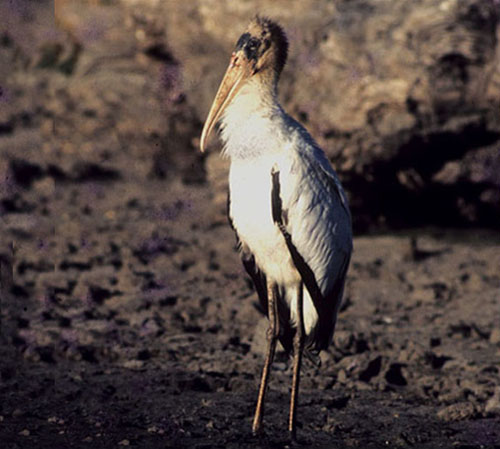
|
# 16
Wood Stork Mycteria americana
In
the New World, storks are tropical species, and tropical residents very
rarely reach northern California. When a big bird like a Wood Stork
occurs, it is a red-letter day. Long ago, on 29 June 1930, two were on
the Salinas River near Gonzales, and one was collected (McLean 1936).
It was 46 years later when MTY's second record occurred, in July 1976,
on private lands south of Big Sur. Locals Paul Hettich and Gale Post
got word to the P.G. Museum of Natural History, who passed the news to
Ron Branson. He visited on 18 July and obtained this photo (right). The
stork's visit began "about 10 July" and it remained "to the end of the
month," but exact dates are not available. It has now been over 40
years since this "most recent" occurrence. According to Am. Birds 30: 997, the stork "frequented small farm ponds in the area and was seen to roost in redwood snags nearby."
Before 1935, a few storks appeared in northern
CA from MTY to Modoc Co. in the far northeast. Since then there have
been about a half-dozen scattered reports in the interior of northern
California, in Tulare, Fresno, and Yolo counties. Ron Branson remains
the only local birder to have one on his MTY list.
photo 18 July 1976 © Ronald L. Branson
|
# 17
Louisiana Waterthrush Parkesia motacilla
This
large and elegant streamside warbler has reached MTY twice. The first
was banded by BSOL on 30 May 2003 and released; it was found later that
day foraging along the Big Sur River. The second was found 23 Dec 2017
by visitor David Dovalina along the Big Sur River in Pfeiffer-Big Sur
SP, and wintered until at least 14 Feb 2018. It sometimes foraged at
locations up to a half-mile apart, and could have been missed at later
dates.
This is among the rarest of
eastern vagrant warblers to reach CA; it and Cerulean Warbler currently
had just 19 accepted records each when we put together our first ranked
County list in 2018, we listed it at #10. The search for "eastern
vagrants" has been a focus of the MTY birding community since the
1960s, and we wanted to include at least one eastern vagrant among the
other extraordinary birds in our "top 10," which range from Siberian
waders to southern seabirds, from Arctic wanderers to tropical
apparitions. Yet by 2019 there 22 CA records (including this one), so
it dropped a fair bit down the list.
Beyond its methodically but cocky demeanor in
flipping dead leaves in the cold clear stream, the cathedral of tall
redwoods that surrounded its venue added to the surreal coincidence
that it was discovered here at all.
photo 24 Dec 2017 © Rita Carratello
|
|
|
# 18
Cerulean Warbler Setophaga cerulea
California
was where birders learned that eastern warblers could be predictably
found, far out of range, during spring and fall migrations. I remember
the 1970s when searching for eastern vagrants was at its peak. At that
time I thought the best warblers one could find would be a Cerulean and
a Prothonotary — both spectacular warblers from the swamps of the
southeast U.S. Now, 40 years later, California has tallied over 100
Prothonotaries but just 19 Cerulean Warblers, which remains the rarest
of these eastern warblers [Louisiana Waterthrush now has 22 accepted
records]. We are very fortunate that four of these have been in MTY,
two at Carmel R. mouth and 2 at Big Sur R. mouth.
The collage (left) shows the HY male banded at
Big Sur Ornithology Lab (BSOL) on 4 Oct 1995. There is a close-up of
the banded Cerulean in-hand. I then followed the released bird for over
an hour, as it joined a flock and eventually bathed in the Big Sur
River. The distant part of the collage shows the warbler approaching
the river for its bath. Too bad we didn't have digital cameras then.
Even more spectacular was a singing male along the Big Sur River on 24
May 2004, watched by Rob Fowler. So far, all of MTY's Cerulean Warblers
have been "one-day wonders."
photo collage from 4 Oct 1995 © Don Roberson
|
# 19
Black-tailed Gull Larus crassirostris
This
east Asian gull was first recorded in California in 1954 but went
unrecorded in the state for 54 years. Elsewhere, since 1990, there had
been a wave of 70+ records, from Alaska through the interior of North
America to the east coast, but very few were on the west coast (Howell
et al. 2014). There are still only about 8 for all of California.
January 2017 produced several amazing gulls in central
California. An adult Slaty-backed Gull at the tip of Pt. Pinos, just
the 3d for MTY, and a Ross's Gull in San Mateo Co. on 12-13 Jan,
produced an influx of State birders looking for both of them. Several
southern Californians who chased the Ross's showed up on Friday, 13
Jan, looking for the Slaty-backed (it was gone) but some found this
first-cycle Black-tailed Gull on or near Crespi Pond. [Later we learned
it had been photographed but not identified the day before.]
Once it had been identified this Black-tailed Gull became
erratic, making appearances both at Pt. Pinos and at Carmel River
lagoon, off and on until 22 Feb, and also appeared at Gazos Cr. mouth,
San Mateo Co., on 25 February.
photo 13 Jan 2017 © Bill Hill
|
|
|
# 20
Wilson's Plover Charadrius wilsonia
Most
of our vagrant waders are "wrong-way" migrants from as far away as
Siberia but his plover comes from the south, with a breeding range
stretching from Virginia to the Gulf, the West Indies, and the Pacific
coast of Central America north to Baja California. A San Diego specimen
goes back to 1894; a female even laid eggs at the Salton Sea in 1948.
There are now 25 records in California, but only one Wilson's Plover
has reached northern CA: this hatch-year bird that associated with
Snowy Plovers on Moss Landing SB from 15 Sep 1992–1 Jan 1993. There
are, however, more recent records for Oregon (1998) and Washington (2
in 2012, one inland; fide Paul Lehman).
Found by Snowy Plover researchers Doug George
and Bernadette Ramer, there was a time in mid-Sep 1992 when a vagrant
juv Lesser Sand-Plover was attracted to the same Snowy Plover flock on
the same beach, and eager listers could view two superb rarities in the
same field of view.
photo 15 Sep 1992 © Don Roberson
|
# 21
Red-necked Stint Calidris ruficollis
Red-necked
Stint is a small Siberia-breeding wader that migrates in the Old World
all the way south to Australia and New Zealand. Such a long migration
route has spun-off "wrong-way" vagrants to the New World. At least 25
have reached California, but so far only one has been found in Monterey
County. On 13 July 2001, Doug George, doing Snowy Plover research in
the Moss Landing salt ponds, discovered this vagrant in gorgeous
breeding plumage. Birders were able to arrange very limited access to
this restricted location on 14 July, and photos were obtained.
So far, 24 of the 25 Red-necked Stints in
California that were accepted by the CBRC were in alternate (breeding)
plumage. Difficulties in separating juvenile Calidris have complicated identification of these small shorebirds in migration. Little Stint C. minuta, another Old World species, has 34 records for California, four of which were in MTY [adults in Apr and Sep, 2 juvs in Sep].
23 June 1996 © John Sorensen
|
|
|
# 22
Dusky Warbler Phylloscopus fuscatus
On
2 Oct 2004, banders at BSOL caught a small, brown warbler that proved
to be a Dusky Warbler — an Old World species that migrates from 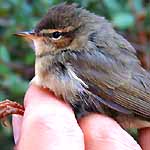 breeding grounds in NE Asia to winter in SE Asia [inset right]. It was considered truly amazing when the first Old World Phylloscopus was found in California [27 Sep 1980 on SE Farallon I.] but now there are 20 records. breeding grounds in NE Asia to winter in SE Asia [inset right]. It was considered truly amazing when the first Old World Phylloscopus was found in California [27 Sep 1980 on SE Farallon I.] but now there are 20 records.
On 27 Oct 2019, Michael Rieser discovered MTY's
second Dusky Warbler (photo left) in a dense willow patch in the Yankee
Pt. vicinity. He noted its "Fox Sparrow-like" call-note and saw quick
views of a small brown skulker. It was documented and identification
verified the next day by photos and recordings.
BSOL also captured an Arctic Warbler P. borealis
on 13 Sep 1995 — the State's first — but since then the taxa has been
split into 3 species, each similar and best separated by vocalizations.
The CBRC relegates the State's 9 records to Arctic/Kamchatka Leaf
Warbler (P. borealis/examinandus). P. borealis would clearly qualify for MTY's top 25 if ever discovered "in the wild."
photo in-hand 2 Oct 2004 © BSOL, Jessica Griffiths
photo 28 Oct 2019 © Blake Matheson
|
# 23
LeConte's Sparrow Ammospiza leconteii
This
small colorful sparrow, a breeder of prairie pothole country of the
northern Great Plains, winters in coastal marshes along the Gulf Coast
of the U.S. About 40 vagrants have reached California, widely scattered
throughout the State. Only one has been found in MTY — and that was 45
years ago.
On 19 Oct 1974, Greg Butcher,
Bob & Carol Yutzy, and Eugene Makishima, all visiting from the Bay
Area, were birding Pt. Pinos and split up to search the edges of Crespi
Pond. It was Greg and Bob who located the unfamiliar sparrow they
tentatively labeled a LeConte's. They telephoned local expert Ron
Branson, who came right out and was able to obtain photos. At the time
it was just the second record for California [the first was on SE
Farallon I. in Oct 1970].
Since then the usually elusive skulker has
occurred in spring and fall migrations, and a few have wintered at
coastal marshes or near the Salton Sea. MTY has rather limited access
to coastal marsh habitat, possibly limiting the odds of finding another
one here.
photo 19 Oct 1974 © Ronald L. Branson
|
|
|
# 24
Mexican Whip-poor-will Antrostomus arizonae
At
dusk on Saturday night 22 June 1996, the participants in a San Joaquin
Audubon Society field trip to Andrew Molera SP were settling in at the
campground when a caprimulgid began singing. Leader Jim Rowoth
recognized that song as Mexican Whip-poor-will, which breeds as near as
mountains in southern Arizona and a couple of locations in southeast
California. He got the word out to Monterey locals, who gathered at
dusk the next evening. When the whip-poor-will began singing again, it
was tape-recorded with the cassette recorder shown in the photo. It
responded vigorously to recordings of nw Mexican populations and its
own song, but did not respond to a tape of Eastern Whip-poor-will. When
responding it was seen in flight with flashlights. The Eastern and
Mexican populations of whip-poor-will were split into two species in
2010. This encounter was well before that split.
This remains the only confirmed record of
Mexican Whip-poor-will in coastal northern California; a whip-poor-will
flushed at Pt. Reyes, Marin Co., 6 June 1986, is presumed to have been
this species but did not vocalize. There are now 3 records of singing
birds in the interior of northern CA: in the Sierran foothills of
Tulare Co. (June 1983) and Butte Co. (June-July 2010), and near Willow
Creek, Humboldt Co. (June-July 2007, Apr-May 2009).
photo collage based on events of 23 June 1996 © Don Roberson
[collage shows cassette tape-recorder used to tape the song, backdrop]
[from Andrew Molera SP, and art from Sibley's field guide]
|
# 25
Tricolored Heron Egretta tricolor
This
colorful and graceful tropical heron is a comparatively frequent
visitor to southern California marshes and lagoons but only four have
reached northern California (as far north as Sonoma and Marin
counties). The only one ever to reach MTY was this first-summer
individual in late May and early June 1999. It was found by Jim Booker,
then the BSOL director, and his interns. Unusual late rains had created
shallow vernal pools in the sand dunes on the causeway that connects
Pt. Sur and its lighthouse with the mainland. BSOL obtained permission
to do bird surveys there in these unusual conditions.
As the location was on private land, only a
couple of escorted small groups of birders were able to watch this
vagrant. On 24 May I noted that it was apparently feasting on tadpoles.
The day this photo was taken (2 June 1999), Booker and invited local
birders also found a vagrant Least Bittern in the few reeds growing
among the vernal ponds.
This is one of just 5 records for northern
California. The others are: Honey Lake, Lassen Co., Aug-Sep 1971
(McCaskie et al. 1988); Santa Rosa area, Sonoma Co., Nov 1992; Bodega
Bay Sep-Oct 1996 with same bird on Pt. Reyes, Marin Co., Oct 1996; and
Tulare Co., June 2000. Birds have also reached Oregon and Idaho.
photo 2 June 1999 © Don Roberson
|
|
| |
ABBREVIATIONS:
- AOU = American Ornithologists' Union
- BSOL
= Big Sur Ornithology Lab, operated by Ventana Wildness Society from
1992 to 2010, upstream from the Big Sur River mouth, in Andrew Molera
SP
- CA = California
- CBC = Christmas Bird Count
- CBRC
= California Bird Records Committee, operated by Western Field
Ornithologists to review reports of a designated set of rare birds in
California
- HY = "hatch-year" in bird banding lingo, i.e. a bird born that year
- MTY = Monterey County
- nmi = nautical mile
- NWR = National Wildlife Refuge
- P.G. = Pacific Grove
- SCZ = Santa Cruz County
- SB = State Beach
- SP = State Park
- SR = State Reserve
|
LITERATURE CITED:
- California
Bird Records Committee (R.A. Hamilton, M.A. Patten, & R.A.
Erickson, eds.). 2007. Rare Birds of California. WFO, Camarillo, CA.
- Howell, S.N.G.1994. Magnificent and Great Frigatebirds in the eastern Pacific. Birding 26: 400–415
- Howell, S.N.G., I. Lewington, and W. Russell. 2014. Rare Birds of North America. Princeton Univ. Press, Princeton, N.J.
- Lehman, P.E., and J.L. Dunn. 1985. A little-known species reaches California. Am. Birds 39: 247–250.
- McLean, D.D. 1936. Some notable bird records for California. Condor 38: 16–17.
- McCaskie,
G., P. DeBenedictis, R. Erickson, and J. Morlan. 1988. Birds of
northern California: an annotated field list. 2d ed. Golden Gate
Audubon, Berkeley.
- Onley, D., and P. Schofield. 2007. Albatrosses, Petrels, and Shearwaters of the World. Princeton Univ. Press, Princeton, N.J.
- Roberson, D. 2002. Monterey Birds, 2d ed. Monterey Audubon, Carmel.
- Roberson, D., and C. Tenney, eds. 1993. Atlas of the Breeding Birds of Monterey County, California. Monterey Audubon, Carmel.
- Schram, B. 1985. "Mahoney's Curlew." Birding 17: 15–18.
- Wilson, E.M., and B.R. Harriman. 1989. First record of Terek Sandpiper in California. W. Birds 20: 63–69.
|
CREDITS related to birds chosen as among the Top 10 and Top 25
- Swallow-tailed
Gull, 6–7 June 1985 at Hopkins, Pacific Grove [Alan Baldridge] and same
bird 8 June 1985 at Moss Landing [W. Ed Harper]
- Little Curlew, 6–28 Sep 1994 Carmel River SB [Bill Hill, Dave Haupt]
- Terek Sandpiper, 28 Aug–23 Sep 1988 Carmel SB [Erika Wilson, Bettie Harriman]
- Gray Wagtail, 9-10 Oct 1988 Salinas R. mouth [David A. Sibley, Jeff Kingery]
- Great
Frigatebird, first record 13 Oct 1979 just offshore of Salinas R. mouth
[Rich Stallcup, Ron Branson et al.]; second record 2 Nov 2016 at
Monterey [Peter Gray] and Pt. Pinos [Skye Haas]
- Gyrfalcon, 3-4 Feb 2018 Pajaro R. mouth to Salinas River NWR [Blake Matheson]
- Gray-faced (Great-winged) Petrel, 18 Oct 1998 Monterey Bay [Richard Ternullo, Steve Howell]
- White-winged
Tern, 17 Aug–16 Oct 1999 Moonglow Dairy [Ed Kwater was first to i.d. it
on 5 Sep 1999; others had seen as "Black Tern" earlier]
- Common Eider, 2-28 Feb 2019, Bird Rock, Pebble Beach [Rick Fournier]
- Sulphur-bellied Flycatcher, 16 Sep 2019, Pt. Lobos SR [Rick Fournier]
- Bulwer's
Petrel, 28 July 1998 Monterey Bay [Richard Ternullo, Jim Danzenbaker,
Debi Shearwater, Greg Brinkley, Tristan McKee, et al.]
- Smith's Longspur, 13–18 Sep 1990 Moonglow Dairy [Doug George]
- Long-toed Stint, 29 Aug–2 Sep 1988 Salinas WTP [Brian E. Daniels, Michael A. Patten]
- Painted Redstart, 31 Oct-3 Nov 1996 Mission Trails Park, Carmel [Joe Narvaez]
- Roseate Spoonbill, 1 Jan–13 Feb 1978 near Moss Landing and near Castroville [Phil Gordon]
- Wood
Stork, first record 29 June 1930 [2 birds; D.D. McLean]; second record
~10–31 July 1976 Rancho Grande, Big Sur coast [Paul Hettich, Gale Post,
Ronald L. Branson]
- Louisiana Waterthrush,
first record 30 May 2003 Big Sur R. m. [BSOL banded]; second record 23
Dec 2017–14 Feb 2018 Pfeiffer-Big Sur SP [David Dovalina]
- Cerulean
Warbler, first record 27 Oct 1978 Carmel R. mouth [imm fem; Stephen F.
Bailey]; second record 25 Oct 1979 Carmel R. mouth [imm male; Don
Roberson]; third record 4 Oct 1995 Big Sur R. mouth [imm male; BSOL
banded]; fourth record 24 May 2004 Big Sur R. mouth [singing adult
male; Rob Fowler]
- Black-tailed Gull, 12–22
Feb 2017 Pt. Pinos & Carmel R. mouth [Steve Turley, Mark &
Lucas Stephenson, Tom Wurster, Bill Hill et al.]
- Wilson's Plover, 15 Sep 1992–1 Jan 1993 Moss Landing SB [Doug George, Bernadette Ramer]
- Red-necked Stint, 13-14 July 2001, Moss Landing WA [Doug George]
- Dusky
Warbler, first record 2 Oct 2004 Big Sur R. m. [BSOL banded]; second
record 27-28 Oct 2019 Yankee Pt. vicinity [Michael Rieser]
- LeConte's Sparrow, 19 Oct 1974 Pt. Pinos [Greg Butcher, Bob Yutzy]
- Mexican Whip-poor-will, 22–25 June 1996 Andrew Molera SP campground at Big Sur R. mouth [Jim Rowoth]
- Tricolored Heron, 24 May–2 June 1999 [Jim Booker]
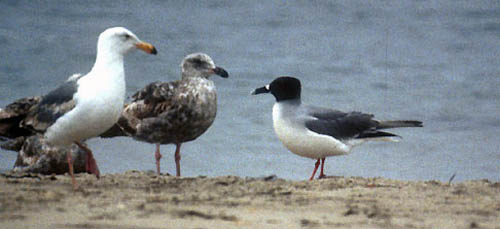
Swallow-tailed Gull at Moss Landing gull roost, 8 June 1985
photo © W. Ed Harper
|
MTY BIRDS WITH ONLY ONE RECORD
per CBRC decisions, as of 30 Nov 2019
- Greater Pewee, 27–29 Dec 1968 Monterey [Bill Reese]
- Snowy Owl, found dead 11 Jan 1974 Salinas R. mouth [D.G. Ainley]
- LeConte's Sparrow, 19 Oct 1974 Pt. Pinos [Greg Butcher, Bob Yutzy]
- Roseate Spoonbill, 1 Jan–13 Feb 1978 nr Moss Landing [Phil Gordon]
- Eastern Yellow Wagtail, 19 Sep 1982 Pt. Pinos [Jon L. Dunn]
- Swallow-tailed Gull, 6–8 June 1985, Pacific Grove & Moss Landing [Alan Baldridge]
- Terek Sandpiper, 28 Aug–23 Sep 1988 Carmel SB [Erika Wilson]
- Long-toed Stint, 29 Aug–2 Sep 1988 Salinas WTP [B.E. Daniels, M.A. Patten]
- Gray Wagtail, 9–10 Oct 1988 Salinas R. mouth [D.A. Sibley, J. Kingery]
- Smith's Longspur, 13–18 Sep 1990 Moonglow Dairy [Doug George]
- Wilson's Plover, 15 Sep 1992–1 Jan 1993 Moss Landing SB [Doug George, Bernadette Ramer]
- Bendire's Thrasher, 3–5 Sep 1993 Salinas WTP [John Mariani, i.d. corrected by Joe Morlan]
- Pine Warbler, 24 Oct 1993 Big Sur R. mouth [Bob Tintle, R.E. Maurer]
- Little Curlew, 6–28 Sep 1994 Carmel River SB [Bill Hill, Dave Haupt]
- Arctic Warbler, 13 Sep 1995 Big Sur R. m. [BSOL banded]
- Mexican Whippoorwill, 22-25 June 1996 Big Sur R. m. [Jim Rowoth]
- Painted Redstart, 31 Oct–3 Nov 1996 Carmel [Joe Narvaez]
- Upland Sandpiper, 12 Sep 1997 Salinas WTP [Bruce Gerow]
- Garganey, 25 Apr–5 May 1998 Salinas WTP [Craig Hohenberger]
- Bulwer's Petrel, 28 July 1998 Monterey Bay [Richard Ternullo, Jim Danzenbaker, Debi Shearwater et al.]
- Veery, 21 Sep 1998 Big Sur R. mouth [BSOL banded]; note, Roberson (2002) accepts another record from Sep 1998 at Carmel R. mouth
- Gray-faced [Great-winged] Petrel, 18 Oct 1998 Monterey Bay [Richard Ternullo, Steve Howell]
- Tricolored Heron, 24 May-2 June 1999 Pt. Sur [Jim Booker]
- White-winged Tern, 17 Aug-16 Oct 1999 Moonglow Dairy [Ed Kwater]
- McCown's Longspur, 3–4 Dec 2000 east of Gonzales [Todd Easterla], and presumably the same bird returning 18 Nov 2001 at same site
- Red-necked Stint, 13-4 July 2001, Moss Landing WA [Doug George]
- Streak-backed Oriole, 24 Nov 2003 Big Sur R. mouth [Jim Tietz]
- Yellow-bellied Flycatcher, 21 Sep 2004 Pt. Pinos [Don Roberson]
- Golden-winged Warbler, 22 Apr 2007 in Washington Park, P.G. [Bill Reese]
- Black Vulture, 14 May 2015 Pacific Valley [Greg Smith]
- Gull-billed Tern, 16 May 2015 Pajaro R. mouth [John Garrett, Nicholas Kronick]
- Black-tailed Gull, 12–22 Feb 2017 Pt. Pinos & Carmel R. mouth [Steve Turley, Mark & Lucas Stephenson, et al.]
- Neotropic Cormorant, 13 Aug 2017 near Moss Landing [Brian L. Sullivan, Paul Fenwick, Cooper Scollan]
- Eastern Wood-Pewee, 3–10 Nov 2017 Laguna Grande Park [Mark Kudrav et al.]; note, Roberson (2002) accepts 2 prior records from Dec 1986 & Sep 1999
- Black-headed Gull, 27 Nov 2017 from Pt. Pinos [Brian L. Sullivan, Karl Bardon, Paul Fenwick]
- Gyrfalcon, 3–4 Feb 2018 Pajaro R. mouth to Salinas River NWR [Blake Matheson]
- Common Eider, 2-28 Feb 2019, Pebble Beach [Rick Fournier]
- Sulphur-bellied Flycatcher, 16 Sep 2019, Pt. Lobos SR [Rick Fournier]
38
species listed; however, note that if one includes the other accepted
records in Roberson (2002), the total drops to 36 unique records. Also,
technically, some recent records on this list may not yet have been
reviewed by CBRC, but we believe they will be accepted. |
| |
|
|



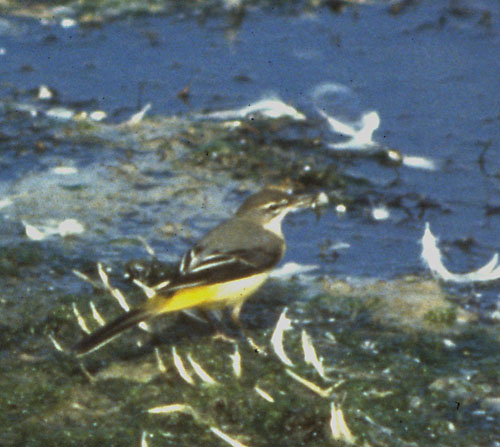
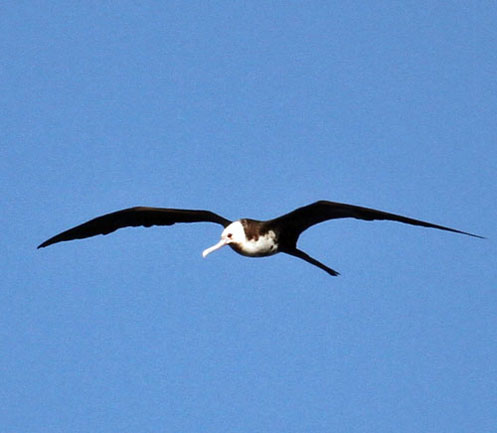

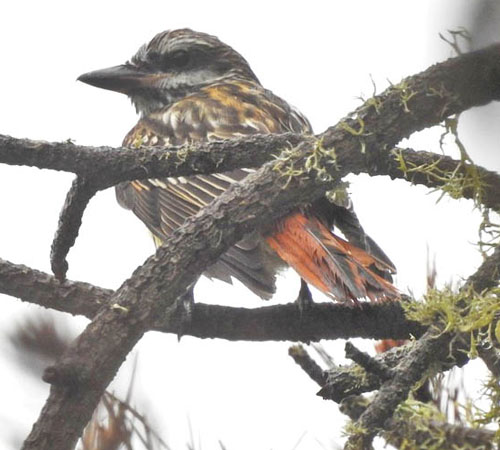
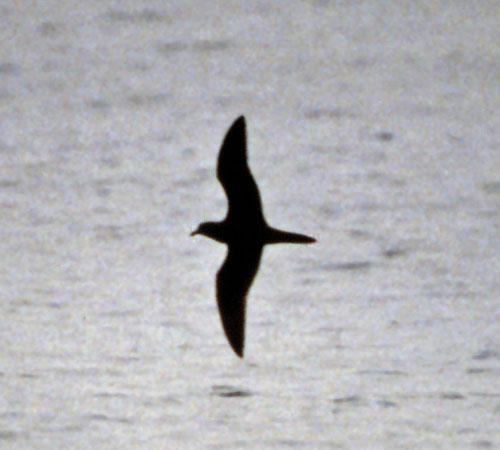
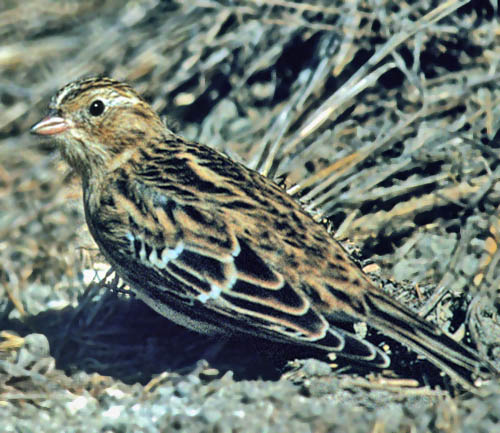

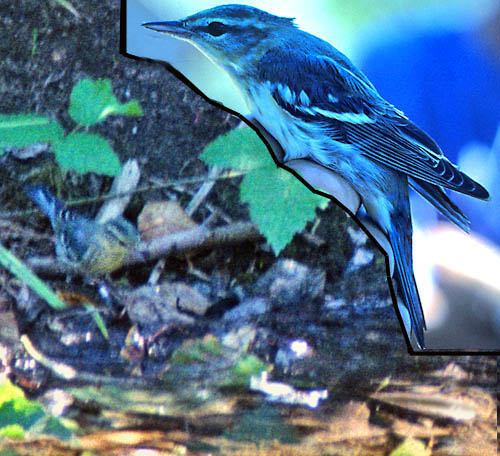
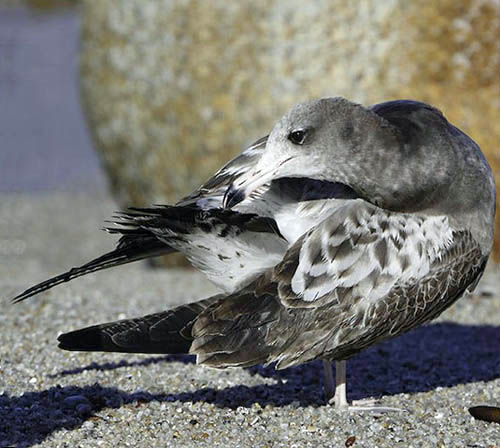
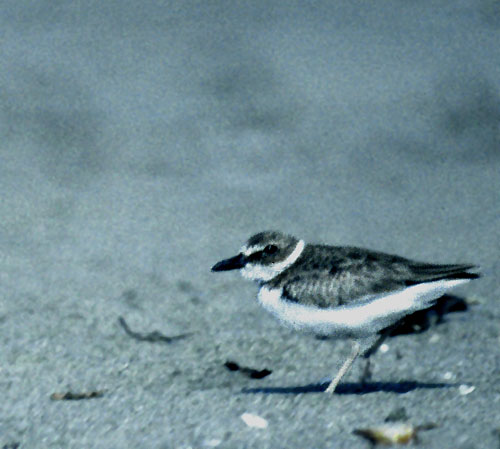
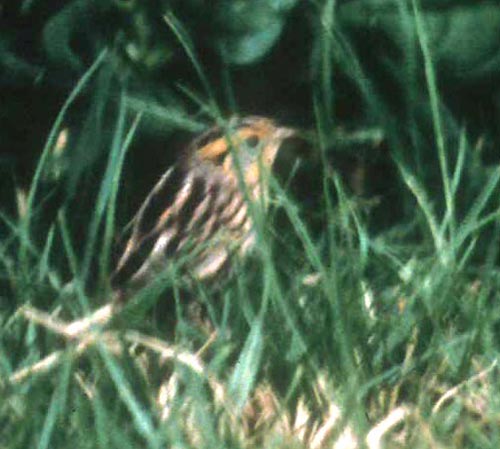
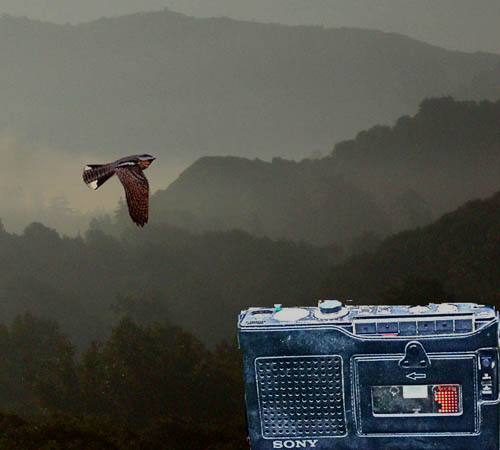

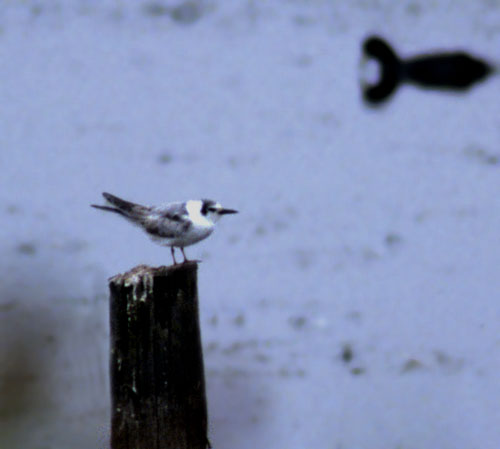
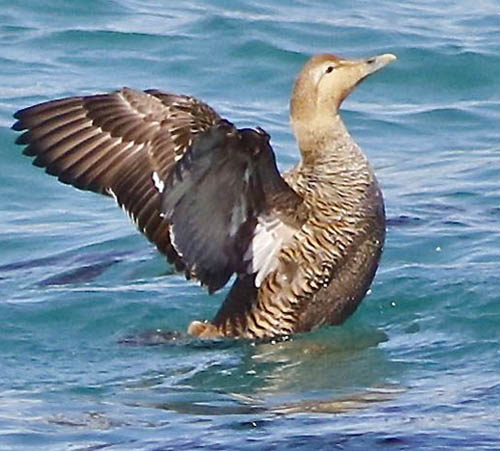
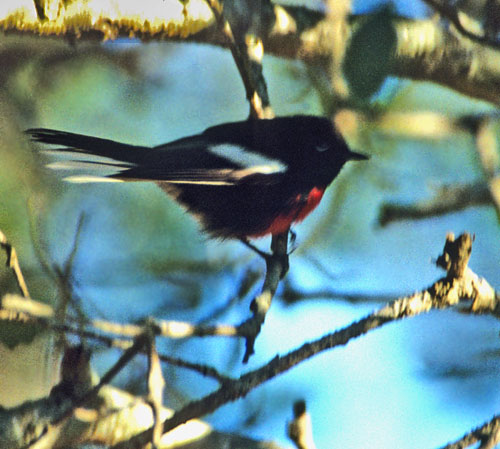
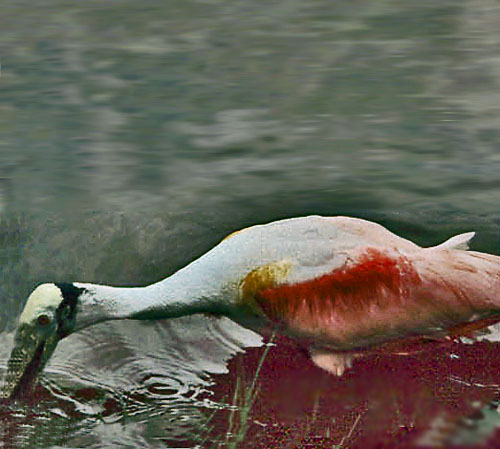

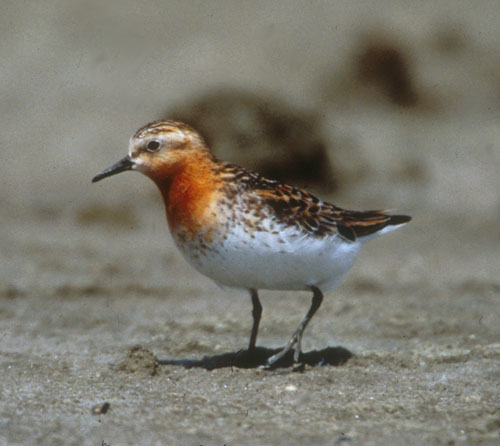
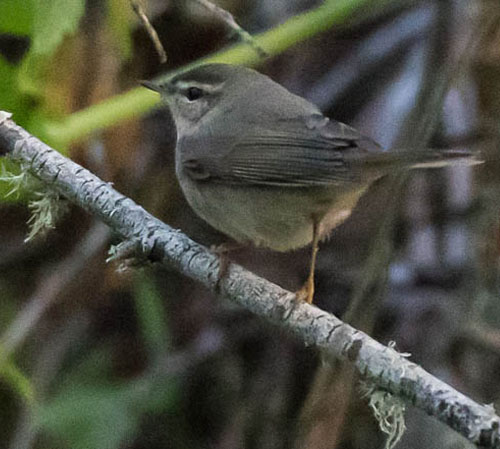
 breeding grounds in NE Asia to winter in SE Asia [inset right]. It was considered truly amazing when the first Old World Phylloscopus was found in California [27 Sep 1980 on SE Farallon I.] but now there are 20 records.
breeding grounds in NE Asia to winter in SE Asia [inset right]. It was considered truly amazing when the first Old World Phylloscopus was found in California [27 Sep 1980 on SE Farallon I.] but now there are 20 records.